
How to Fix a Power Steering Leak in 9 Easy Steps: Check it Now
Your car’s power steering assembly transfers hydraulic power to each wheel from the steering fluid. By doing that, the car will not only be more responsive, it’ll be easier to direct it when driving.
More...
After several years of use, you might notice that the steering become stiffer. After being used for some years, it’s normal for it to be not as good as it was. That might be because of power steering fluid leaks.
At this point in this primer, let me introduce you to the power wheel steering system:
1. Understanding the Power Steering System

Via mechanicalengineeringblog.com
On top of the recirculating-ball mechanism or the rack-and-pinion, a power steering has some important components.
The pump is one of them (see diagram above). It provides the steering with hydraulic power. The amount of fluid flow the pump provides depends on the engine speed of your car.
Therefore, a pump must be tailored in such a way that it offers adequate flow even when the engine is idle.
Power steering systems only assist you when you’re exerting force on the wheel. When that is not happening, it shouldn’t provide any help. The valve body unit (see the diagram above) is the device that senses any form of force on your steering wheel.
Before you begin to fix your power steering leak, it’s highly important to ensure that the system is leaking. The puddle of oil might be from the power steering. Additionally, it can also be a transmission leak, engine oil leak or some other problem.
When it comes to identifying an oil leak, the rule of thumb is to check the color. However, that’s not the case with a power steering fluid since it doesn’t have a set color.
2. Signs of a Power Steering Leak
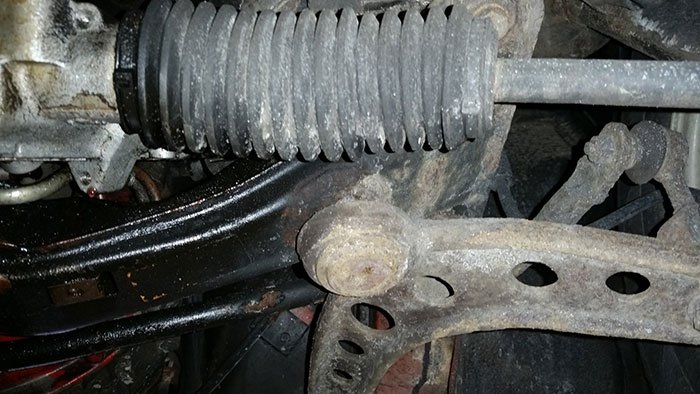
Photo by Norman Gile
Luckily, there are sure-fire ways to tell whether the system is leaking.
Here are some of them:
- SYMptom #1
- SYMPTOM #2
- SYMPTOM #3
- SYMPTOM #4
Fluid Reservoir Level
The most effective way of proving that your car is suffering from a power steering leak is by keeping track of the fluid level. Most if not all reservoirs feature a dip stick that’s attached to the cap’s bottom.
You should always check the fluid reservoir level occasional using a dipstick. If you find out that it’s dropping consistently, then you can know you’ve got a leak on your power steering.
3. Step-By-Step Guide to Fix a Power Steering Leak
Items Needed
Have you noticed that your power steering has a leak; here are the steps you need to follow to fix the leak right at the comfort of your garage:
Step #1. Park Your Car in the Garage and Lift it Using a Car Jack
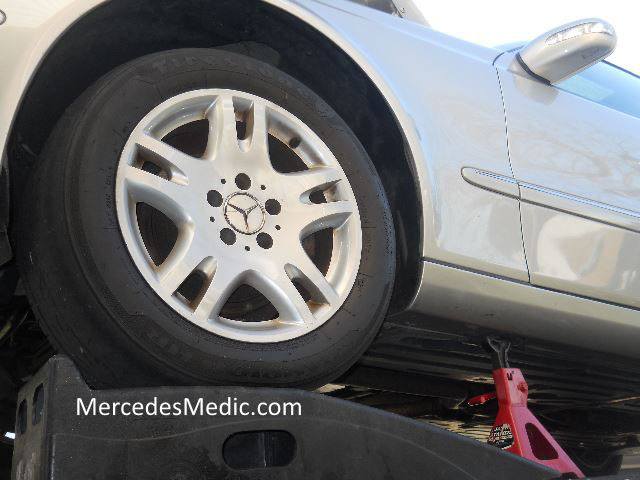
Via Mercedesmedic.com
Prior to starting the process, you should make sure that your vehicle is in a safe area. You can fix the leak on a dry and flat surface. After establishing the safe area, drive your car on a car ramp. Alternatively, you can jack the front end or your car in the air. For more stability, you can use jack stands. While you do that, ensure you chock the wheels.
Step #2. Locate the Power Steering Pump and Tighten the Nuts on the Pump

Photo by Stephen
The fluid reservoir and power steering pump is located at the engine bay’s bottom close to the end of your car’s steering column. After locating it, you should give it a real time check to establish If some fluid is leaking from the pump.
Is the leak emanating from the pump? If that’s the case, then you can fix it with just a number of twists of ratchet present on the nuts. At times, the hose clamps can loosen because of the vibrations of driving.
Step #3. Replace the Cracked Hoses
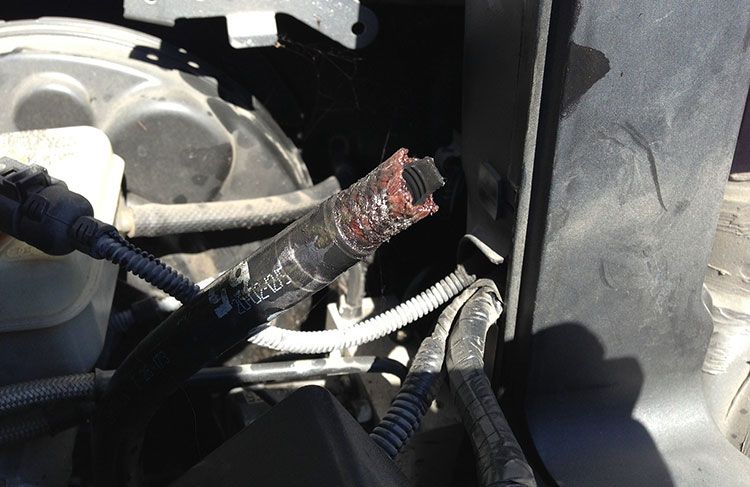
Photo by Drew Duncan
Do you notice cracks on the hose itself? If yes, then you’ll have to immediately replace them. All you need to do is loosen the hose clamps on the component in order to get rid of the old hose.
Next, attach a replacement hose and then tighten the clamps around the hose yet again. You’ll notice that the crack is extremely close to the components end. If that’s the case, you might be able to cut the end off and then reuse the same hose.
Step #4. Check the Steering Column Seals
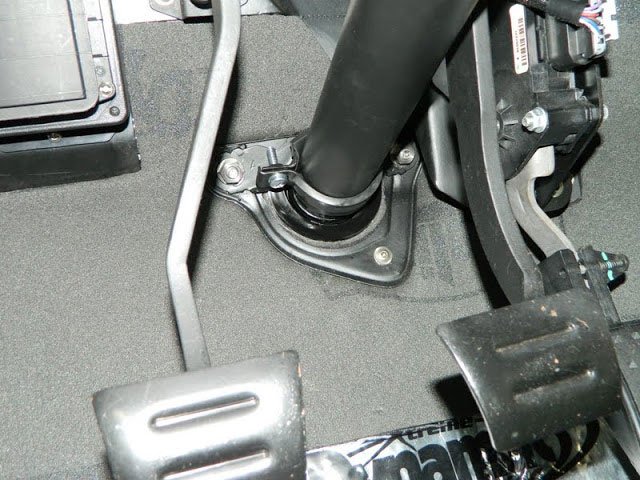
Via 67novaproject.blogspot.com
The steering column’s rubber seals are one of the most common places where power steering fluid might leak through. You should check the area and replace any seals that are worn.
Step #5. Bleed Lines

Via mobiloil.com
Did you have to change the hoses and replace fluid inside the power steering assembly? If yes, then you’ll need to bleed lines of any air.
Therefore, leave the cover off the reservoir. Have someone steer your car in order to build up pressure.
As the bubbles escape, wait until the car slows down and then replace the cover. Next, have the steering continue. Observe whether it’ll be responsive or not.
Persist with bleeding the line as long as you deem necessary in order to get rid of the air.
Step #6. Replace Reservoir

Photo by ericandshovin
You might need to replace some gaskets on the pinion and rack assembly. You should do that if they are worn and/or dried out.
All you need to do is to get rid of the old ones. After that, ensure that you purchase suitable replacements.
After that, refit them in the same location and secure.
Step #7. Replace the Rack and Pinion
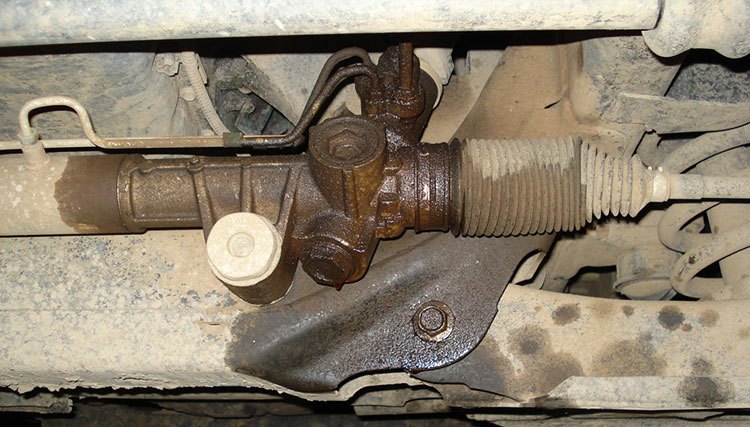
Photo by brian gautreau
Some leaks are a result of the pinion and rack falling. When such a thing happens, you can utilize some Leak Stop to seal up the cracked areas. However, to fix the leaks entirely, you’ll need to replace the pinion and rack completely.
Begin by securing the steering wheel in such a way that it doesn’t move when you’re removing the rack. Next, remove both the front wheels in order to get effortless access to your car’s steering rack.
After that, unfasten and remove the tie rod from your car. Brand new steering racks don’t come with one. Therefore, you’ll have to attach them to the current tie rods prior to finishing the installation.
Unscrew the rack assembly right from the tie rod and then repeat the process on the car’s other side.
Step #8. Unscrew Stabilizer Bolts
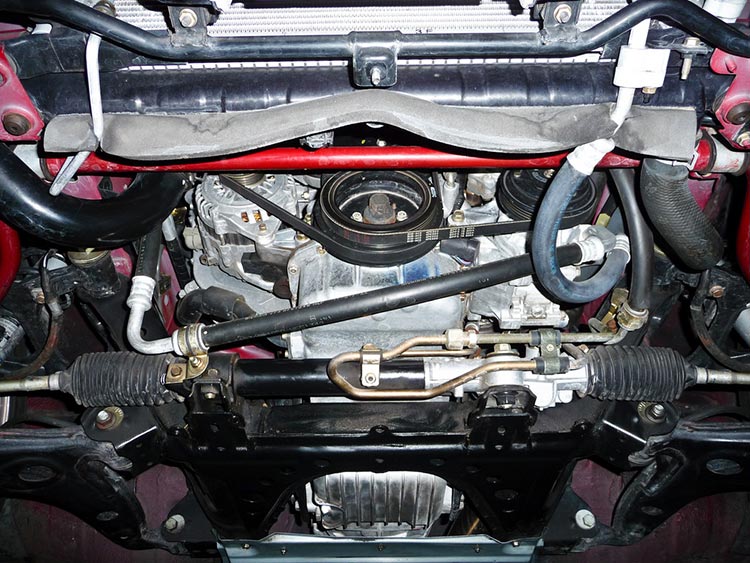
Photo by clauretano
Next, remove the stabilizer bolts from the torsion bar. Unbolt them from the frame. Then, slide it out so that you can access the bolts that hold the rack firmly in place.
You will need to get rid of the power steering lines from the rack before you finally unscrew the pinch bolt on your car’s steering column shaft. Doing that will make the entire assembly to slide off.
Next, slide the brand new rack to the groove. Start the reversing the process in order to secure it firmly in place. Ensure that the tie rod is identically aligned on either side.
After this step, it is highly important to make sure that your wheel is properly realigned. Wheels that aren’t correctly centered can cause major problems on the road. Therefore, it is prudent to learn how to straighten steering wheel so that you can always be on the safe side.
Step #9. Replace Your Car’s Power Steering Fluid

After fixing the leak and with new gaskets, hoses and steering rack in place, you can proceed to refill your fluid reservoir with fluid.
All Done!
Power steering systems require a fluid to operate efficiently. Degraded seals and damaged hoses are some of the most common contributors to these kinds of leaks. Lack of power steering fluid causes the pump to overheat or wear out rapidly.
When such a thing happens, the pump can turn out to be useless.
If you don’t stop this kind of leak immediately, the pump will break eventually due to lack of optimum fluid levels. Furthermore, the pressure transmission will end up slowing down. Whenever you detect the leak, you should fix the issue immediately. Some automotive engineers might recommend that you utilize some mechanical products to help control the fluid leakage.
Clearly, there’s urgent need to always fix a leak immediately you spot one.
Did you enjoy reading the above post? Did you find it helpful? I really hope it was. Feel free to share the article so that anyone out there who is in need can benefit from the solutions provided.
If you have had an experience fixing your power steering leak, let us know in the comments section below. Sharing is caring, right!
Related Posts
How to Unlock the Steering Wheel: 2 Best Quick and Effective DIY Methods to Know
The 5 Best Car Steering Wheel Covers You Should Try For Your Car Now!
How to Straighten Steering Wheels – Know What’s Wrong and How to Fix It
How to Put On a Steering Wheel Cover – Easy and Quick Tricks

